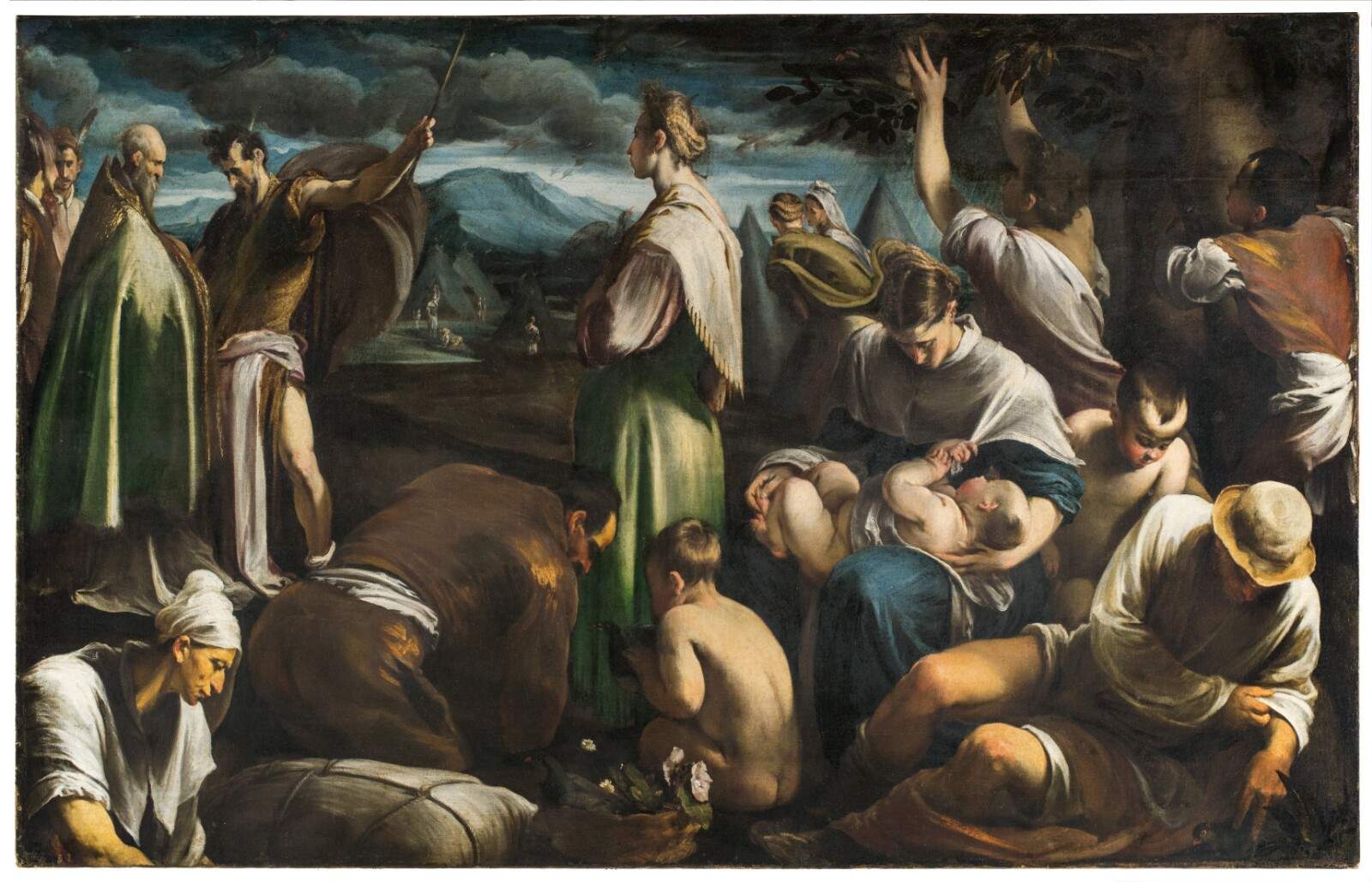From the Facebook group Le Connoisseur, always diligent and a source of interesting ideas, comes, on the part of administrator Lorenzo Barbato, a report of a piece of news that has not been talked about in Italy and that has instead obtained good coverage in the American media: the Getty Museum’s purchase of a work by Jacopo Bassano, the Miracle of the Quails. A masterpiece, by the very definition of the Los Angeles museum, which announced its purchase last October 18, but only a few days ago published the complete record of the painting, which will now be exhibited to the public.
The work, dated 1554, is presented by the Getty as “one of the artist’s largest and most ambitious,” and again as an “outstanding example of Bassano’s distinctive style and his juxtapositions of historical subjects and ordinary, poor people.” We are familiar with the circumstances under which the painting was executed, since it was commissioned in 1554 by the Venetian nobleman Domenico Priuli (payments are documented in the painter’s Libro de’ conti, where the painting is described as “l’istoria como vene le cotornice al populo d’Israel”). In this admirable canvas, Jacopo Bassano ventured into a rare depiction of the biblical episode of the miracle of the quails, narrated in Exodus and Numbers: it is the moment when the people of Israel, led by Moses and Aaron and exhausted after leaving Egypt, are fed with the quails that God rained down from heaven. This is how Davide Gasparotto, senior curator of painting at the Getty, describes the work: “It perfectly embodies the genre to which Bassano owes his fame: the depiction of biblical themes with a pastoral character, where realistic details of daily life take shape in compositions of great formal refinement. Black shadows prevail, and colors shine through thick layers of pigment. Precision-drawn surface details blur into passages applied with looser brushstrokes. This almost abrupt but highly calculated simplicity gives the painting a mysterious and poetic aura.” It is, in essence, a painting that stands out in Bassano’s production because of the rarity of the subject, the originality of the composition and the very fine quality of execution.

The news of the Getty’s purchase of The Miracle of the Quails has shaken the spirits of insiders and art lovers because it is a work that should not have ended up in America: according to current knowledge, it has always remained in Italy until the purchase by the California museum. Reading the file on the Getty website, it appears that from 1948 to 2006 the painting was owned by the Florentine collector Vittorio Frascione, a famous antiquarian: it was Frascione’s heirs who sold it, through a company registered in New York, OMP Fine Art LLC. Barbato reported, moreover, that the painting was already available on the market in the mid-1990s, and was also offered to the Uffizi.
The private individual, of course, decides to dispose of his property according to what the law allows him to do. The problem, in the case of the Miracle of the Quails, relates exclusively to the sphere of the public: how is it possible, everyone wonders, that the export office of the relevant superintendency granted permission for the painting’s exit from the national territory, and no one thought to subject it to a lien? In fact, the exit, we learn from the discussion that developed in Le Connoisseur, would have taken place in a lawful and regular manner. This means that the state would have authorized the export of the work: on what grounds? Why did the state not place the lien (as it can and should do, in the presence of high-value cultural goods), and then find adequate financial compensation in order to secure the work for public collections, if the private party’s intention was to sell a key work by Jacopo Bassano? The state could have purchased it to allocate it to a Venetian museum, since that is where the work came from and Venice is the city with which the Miracle of the Quails has a documented historical relationship, especially since Jacopo Bassano is an artist not so frequent in our museums. It certainly cannot be said that the work was unknown, having been the subject of many important studies, including recent ones. And an export office official cannot fail to realize the importance of the work. Not only that: at the Ministry of Culture there is a Service IV, established in 2016 and renewed in 2019, which is also in charge of “control over international circulation aimed at preserving lintegrity of the national cultural heritage in all its components,” coordinating export offices scattered throughout the country. What went wrong on the Miracle of Quails?
It is, therefore, an affair on which clarity is needed. Of course, it is unlikely that the work will be able to return to Italy: however, it is entirely legitimate to expect explanations to arrive.
Warning: the translation into English of the original Italian article was created using automatic tools. We undertake to review all articles, but we do not guarantee the total absence of inaccuracies in the translation due to the program. You can find the original by clicking on the ITA button. If you find any mistake,please contact us.